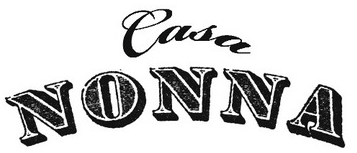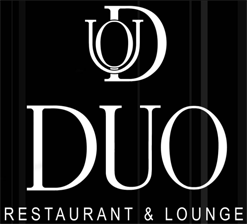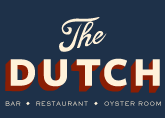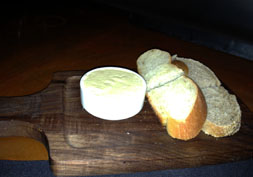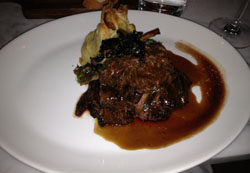Top Ten New Restaurants of 2011
 Friday, December 30, 2011 at 12:52PM
Friday, December 30, 2011 at 12:52PM Yesterday, I posted my top ten restaurant disappointments of 2011. Today, here are my ten best.
It was not a great year. Most of my choices come with hedges and caveats. There was no consensus #1, and among my top ten there are very few that I am confident will still be open, and still be good, a year or two from now.
As usual, the list includes restaurants I reviewed in 2011 that opened this year or late last year. (Most critics who make such lists seem to operate the same way, given that the standard reviewing cycle for a new restaurant is anywhere from two to four months after the opening date.)
Let me first mention a few places that didn’t make the cut. The Dutch and Tertulia are on the top-ten lists of every critic in town (Sifton, Platt, Sutton). I consider them disappointments, rather than hits, for the reasons I gave yesterday. Multiple critics mentioned Ciano and Kin Shop, and deservedly so, but I reviewed them late last year, so they were on my 2010 list.
Empellón was on all three critics’ lists. I didn’t enjoy my visit, partly due to the punishing sound level. I understand it has improved, but I was disappointed. The Red Rooster is on two out of the three critics’ lists. I found it not bad at all, but I have no particular desire to return.
I considered including the first-class revamp of the Monkey Bar. But it’s not a new restaurant, just a new staff, so it’s not on my list. Finally, there are some possibly excellent places that I simply didn’t get to: Danji, Romera, and Isa.
Now, to the list:
 10. Gastroarte. This place had a rough start, after the chef was forced to change the original name (Graffit) in a trademark dispute. On an earlier visit, the kitchen was inconsistent, and the critics weren’t kind. By October, I found it much improved. Though not to all tastes, chef Jesús Núñez is serving some of the cleverest, most original food in the city.
10. Gastroarte. This place had a rough start, after the chef was forced to change the original name (Graffit) in a trademark dispute. On an earlier visit, the kitchen was inconsistent, and the critics weren’t kind. By October, I found it much improved. Though not to all tastes, chef Jesús Núñez is serving some of the cleverest, most original food in the city.
 9. Hospoda. This “beer hall” dedicated to Czech cuisine, also got very little critic love, and it took them a while to figure out the right price point. (A $76 prix fixe was wisely abandoned early on.) As I wrote in my original review: “There’s always a place in my heart for restaurants that come out of nowhere—that neither set nor follow any discernable trend; that exist, for no other reason than someone believes in an idea.”
9. Hospoda. This “beer hall” dedicated to Czech cuisine, also got very little critic love, and it took them a while to figure out the right price point. (A $76 prix fixe was wisely abandoned early on.) As I wrote in my original review: “There’s always a place in my heart for restaurants that come out of nowhere—that neither set nor follow any discernable trend; that exist, for no other reason than someone believes in an idea.”
 8. Rouge et Blanc. This much-overlooked Vietnamese restaurant with an excellent wine list is on none of the major critics’ lists, simply because none of them reviewed it. Eric Asimov finally did so a month ago, giving it two stars.
8. Rouge et Blanc. This much-overlooked Vietnamese restaurant with an excellent wine list is on none of the major critics’ lists, simply because none of them reviewed it. Eric Asimov finally did so a month ago, giving it two stars.
 7. Boulud Sud. For his second Lincoln Center restaurant, Daniel Boulud swam against the tide, and opened a relatively formal place (by modern standards), tablecloths and all. He was rewarded with mostly rapturous reviews for his best new restaurant in years, and a place on all three critics’ best-of-2011 lists. My only visit was relatively early, and the menu structure has changed since then. I wonder if Boulud can maintain the early high standard, now that the review cycle is over and his attentions are fixed elsewhere.
7. Boulud Sud. For his second Lincoln Center restaurant, Daniel Boulud swam against the tide, and opened a relatively formal place (by modern standards), tablecloths and all. He was rewarded with mostly rapturous reviews for his best new restaurant in years, and a place on all three critics’ best-of-2011 lists. My only visit was relatively early, and the menu structure has changed since then. I wonder if Boulud can maintain the early high standard, now that the review cycle is over and his attentions are fixed elsewhere.
 6. Fatty ’Cue (West Village). Zak Pelaccio promised that the second outpost of Fatty ’Cue would be more “grown up,” and he delivered. No one would call any Pelaccio restaurant formal, but this is the most polished and the most enjoyable of the four “Fatties” to date.
6. Fatty ’Cue (West Village). Zak Pelaccio promised that the second outpost of Fatty ’Cue would be more “grown up,” and he delivered. No one would call any Pelaccio restaurant formal, but this is the most polished and the most enjoyable of the four “Fatties” to date.
 5. Crown. I waited and waited to visit Crown, worried that it was just another of chef John DeLucie’s over-priced pseudo-clubs. It turns out Crown is wonderful, an hommage to old-fashioned formality that even downtown folk are flocking to. DeLucie himself is not a great talent, but he put Crown in the hands of good people, and they delivered.
5. Crown. I waited and waited to visit Crown, worried that it was just another of chef John DeLucie’s over-priced pseudo-clubs. It turns out Crown is wonderful, an hommage to old-fashioned formality that even downtown folk are flocking to. DeLucie himself is not a great talent, but he put Crown in the hands of good people, and they delivered.

 4. Junoon and Tulsi (tie). This was the year for haute Indian cuisine, with Junoon and Tulsi both winning Michelin stars. I visited Junoon twice (it has the better room and superior wine service), though the food at Tulsi might be better. I’m calling it a tie. [Yes, I know that gives me eleven restaurants on the list, rather than ten.]
4. Junoon and Tulsi (tie). This was the year for haute Indian cuisine, with Junoon and Tulsi both winning Michelin stars. I visited Junoon twice (it has the better room and superior wine service), though the food at Tulsi might be better. I’m calling it a tie. [Yes, I know that gives me eleven restaurants on the list, rather than ten.]
 3. Ai Fiori. As chef Michael White syndicates his empire globally, you start to wonder if he’s just going through the motions, but my meal there was superb, and his butter-poached lobster was probably the single best dish I had all year. The restaurant has since lost its chef de cuisine (Sifton knocked Ai Fiori off his list for this reason), but I’m paying tribute to what was achieved at the time, not for what the future holds.
3. Ai Fiori. As chef Michael White syndicates his empire globally, you start to wonder if he’s just going through the motions, but my meal there was superb, and his butter-poached lobster was probably the single best dish I had all year. The restaurant has since lost its chef de cuisine (Sifton knocked Ai Fiori off his list for this reason), but I’m paying tribute to what was achieved at the time, not for what the future holds.
 2. Brushstroke. David Bouley has screwed up so many restaurants that it was almost a surprise when he got one right. Japanese Kaiseki cuisine is a tough sell in New York (there are very few places that offer it), and Bouley isn’t making it any easier on himself with the world’s worst restaurant website. As of September there were month-long waits for reservations, but the happy hour menu recently announced could be a sign of trouble.
2. Brushstroke. David Bouley has screwed up so many restaurants that it was almost a surprise when he got one right. Japanese Kaiseki cuisine is a tough sell in New York (there are very few places that offer it), and Bouley isn’t making it any easier on himself with the world’s worst restaurant website. As of September there were month-long waits for reservations, but the happy hour menu recently announced could be a sign of trouble.
 1. Jungsik. This was my last review of the year, and the best new restaurant of the year. Alas, the city’s critics have little patience for upscale prix fixe Korean cuisine. I worry they’ll be forced to dumb down the menu (prices have already been reduced), but for now it’s excellent.
1. Jungsik. This was my last review of the year, and the best new restaurant of the year. Alas, the city’s critics have little patience for upscale prix fixe Korean cuisine. I worry they’ll be forced to dumb down the menu (prices have already been reduced), but for now it’s excellent.
 Year in Review in
Year in Review in  Restaurant Industry
Restaurant Industry 



